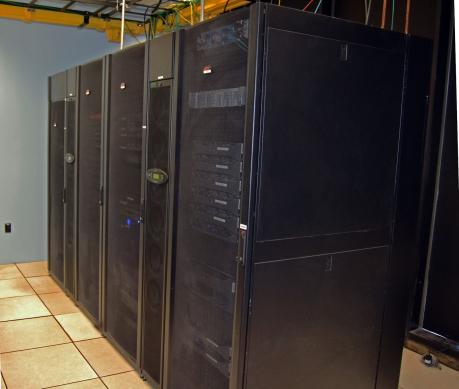CTS On the Scene with Green Machines

Over the past year, Facilities Management and Campus Technology Services completed a data center renovation project. These efforts coincide with a larger SUNY initiative to reduce energy usage. Let’s take a look at how this impacts our sustainability efforts at Oswego.
Big Needs, Small Space
The Data Center in Culkin Hall now takes up about half of it’s previous space. Prior to the renovation, the area housed older, inefficient HVAC systems and was utilizing single phase electrical feeds. By reducing the physical footprint of the space, and moving to 3-phase power, the area requires less AC. The move to a “3 Phase Power” system is a significant step to reducing energy use and heat generation.
Timing is Everything
Although much of the hardware was replaced, our technicians worked around the College’s schedule to ensure minimal impact on daily operations. A key component of this endeavor was the move to redundant virtualization, where software solutions replace hardware.
Consolidation Using Virtualization is Key
According to Systems Administrator Carlo Bell, we are now “doing way more with way less.” Applications that were running on dedicated hardware have been consolidated to fewer, more powerful redundant virtualized systems, reducing energy needs and inefficiency. In total, we went from 59 servers and 8 racks to 29 servers over 4 racks. These systems provide more processing power to meet growing technology needs. And in the event that one machine goes down, the others will instantly take over, providing full redundancy.
Pressing the “Refresh” Button
CTS implemented purpose built, efficient AC cooling systems that greatly reduced the power consumption of our center. Previously, towering AC units flooded the space, battling sunlight to keep the units cool. Now, each server rack features in-row, contained cooling that doesn’t allow heat to dissipate.
Getting Results
The campus significantly reduced the total amount of energy consumption, while also freeing up limited, valuable space and increasing our system’s performance to meet ever evolving campus needs. Not bad!


